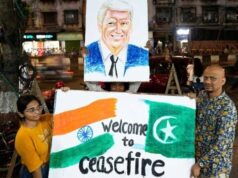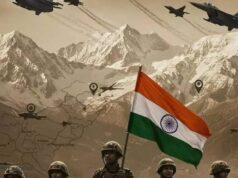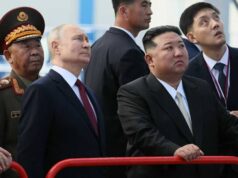US-India trade war is more myth than reality
By Swaran Singh
US President Trump seems busy opening multiple war fronts as he moves closer to the 2020 presidential election while hoping to cash in on his brand of virulent jingoism that has kept him in the eye of a storm of global contention.
President Trump ended preferential trade treatment for NATO-ally Turkey effective May 17 and threatened a 5 percent tariff on goods from NAFTA-partner Mexico starting June 10. India is the latest addition to Trump’s list of nations targeted for his “maximum pressure” strategy.
Does this mean India will forever lose its designation as a beneficiary developing nation?
Prima facie, the increasingly aggressive approach of Prime Minister Narendra Modi, who has just returned to power with a larger mandate than his historic victory in 2014, could turn Trump’s move into a red-line violation. The response could be goaded by Modi’s ambitious “Make in India” vision and his dreams of India becoming a $5 trillion economy during his second term.
There are reasons why any US-India trade war would be symbolic rather than substantive with any systemic implications. First, compared to the US annual imports of $558 billion from China, its imports from India stand at over $83 billion.
This hardly makes a US-India trade war transformative, and it could avoid global headlines. Moreover, Trump’s decision on US imports from India would involve no more than $5 billion compared to its $83.2 billion in global imports that qualify for US tariff-exemptions.
India has chosen a strategy of asymmetric accommodation rather than confrontation, with visible dividends. Purchase of Russian S-400 air defense systems last year by India is just one example. The US didn’t slap sanctions on India due to the military deal. India is also a major defense partner that has ordered over $15 billion in US weapons systems in the last 10 years. As a result of India’s diplomacy, Modi remains one of the few world leaders having escaped Trump’s fiery tirades, tweets, and temper.
The first day of Modi’s second term began with an accusation from the US that India had yet to give it “equitable and reasonable access to its markets.” But this was again a modest expression of Trump’s displeasure that merely justified stripping India of the exemption that had allowed an extended one year period for select nations when Trump announced wide-ranging tariffs.
In addition to the increased tariffs on steel and aluminum, pulling the exemption will impact Indian exports like jewelry, textiles, washing machines, auto parts, agriculture products, and even solar panels.
In maintaining its accommodating tone, the first response from the Modi government described the move as “unfortunate,” accepting it as the result of failed negotiations. India’s “development imperatives and concerns” were also cited as its “people also aspire better standards of living,” making it difficult to comply with US demands.
By creating space for US concessions, India announced it would impose tariffs worth $240 million on US almonds, apples, and metal products, but has postponed doing so on multiple occasions.
At the same time, India has quietly resisted increasing US pressure to open markets for their dairy products, medical devices, and other goods, while raising tariffs on premium products like Harley Davidson motorcycles.
The key to the emerging trajectories of US-India trade tensions is rooted in their emerging geopolitical irritations. The US has not been appreciative of India’s assertions of “strategic autonomy” especially when it comes to regime change strategies using stifling sanctions against Iran and Venezuela, India’s third and fourth largest suppliers.
The first two years of the Trump administration saw him positioning India at the center of his South Asia policy and his “Free and Open Indo-Pacific” rhetoric.
Last year, Modi began propagating the inclusion of China and Russia within the Indo-Pacific discourse and ensuring the Quad (US, Japan, Australia, India) would not be allowed to “militarize” or become an “exclusive” club of anti-China powers.
It is within this framework that India’s changing regulations and its proposed Personal Data Protection Bill 2018 have not found favor with US e-commerce companies like Amazon and Walmart-owned Flipkart Group.
As Trump will be distracted or restrained during next year’s US presidential race, this piecemeal simmering of US-India tension will not likely experience any tremors.




